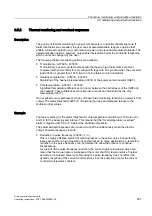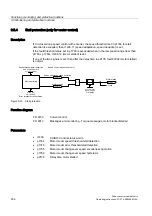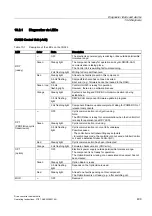
Functions, monitoring, and protective functions
9.5 Monitoring and protective functions
Drive converter cabinet units
402
Operating Instructions, 07/07, A5E00288214A
●
Reducing the output frequency (p0290 = 0, 2)
This variant is recommended when you do not need to reduce the pulse frequency or the
pulse frequency has already been set to the lowest level. The load should also have a
characteristic similar to a fan, that is, a quadratic torque characteristic with falling speed.
Reducing the output frequency has the effect of significantly reducing the converter
output current which, in turn, reduces losses in the power unit.
●
No reduction (p0290 = 1)
You should choose this option if it is neither possible to reduce the pulse frequency nor
reduce the output current. The converter does not change its operating point once an
alarm threshold has been overshot, which means that the drive can be operated until it
reaches its shutdown values. Once it reaches its shutdown threshold, the converter
switches itself off and the "Overtemperature, overload" fault is output. The time until
shutdown, however, is not defined and depends on the degree of overload. To ensure
that an alarm can be output earlier or that the user can intervene, if necessary, in the
drive process (e.g. reduce load/ambient temperature), only the alarm threshold can be
changed.
Function diagram
FD 8014
Thermal monitoring, power unit
Parameters
•
r0036
Power Module overload
•
r0037
Power Module temperatures
•
p0290
Power Module overload response
•
p0294
Power Module alarm with i²t overload
















































